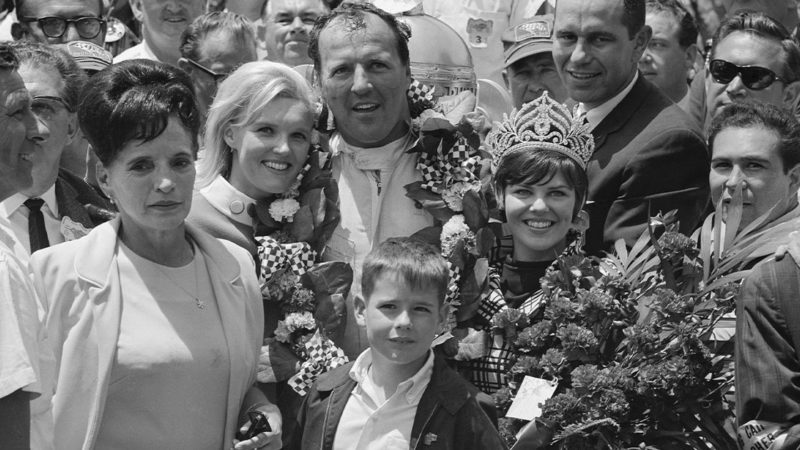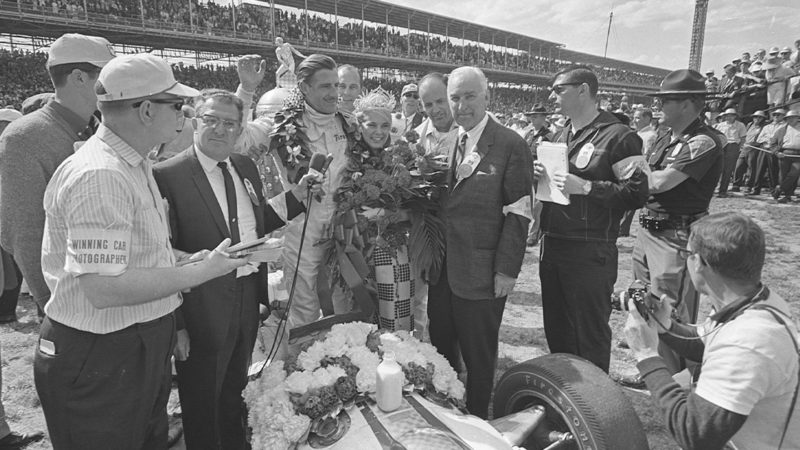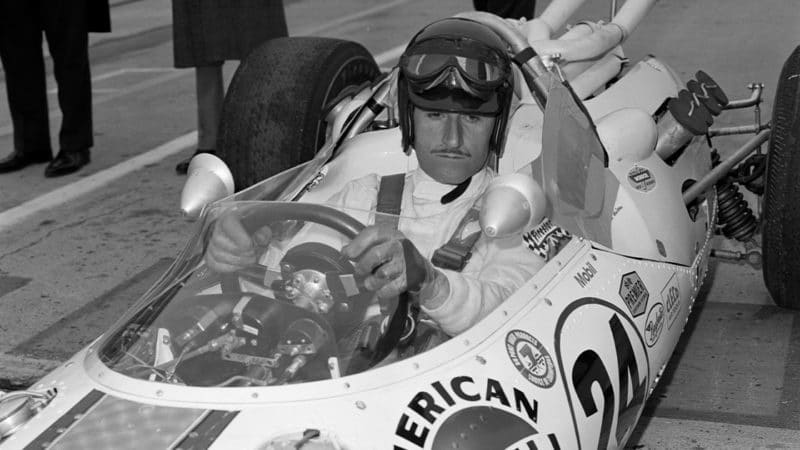Among Hill’s complaints were the commodes in Gasoline Alley, which were arranged, military barracks-style, in an open row. Track owner Tony Hulman, stung by the criticism, immediately brought in a carpentry crew to install plywood partitions.
Hill and Stewart effortlessly got up to speed and qualified in mid-pack. Ward qualified between them – and was thrilled to start 13th. “He hadn’t made it [into the race] the year before,” Lance explains, “so when he qualified, he was in tears.”
The race opened with a bang; 11 of the 33 cars were eliminated in a huge crash on the front straight. Ward mystified his crew by parking his seemingly healthy Lola on Lap 74, complaining about diabolical handling on the oily track. (The following night, at the post-race banquet, he announced his retirement from racing.)
Jimmy Clark and Lance’s old bud Ruby were the class of the field. But Clark spun twice, and Ruby’s engine let go. Suddenly, Stewart was leading the race with nobody left to challenge him. With 10 laps remaining, just cruising to the finish, Stewart lost oil pressure, and Hill was there to pick up the pieces, becoming the first rookie in four decades to win at Indy.
After working on the Lola T70 that Stewart drove in the last three Can-Am races of 1966, Lance solicited a job from another old friend and fellow Texan, AJ Foyt. Smarting after a winless Indy car season in 1966, Foyt had acquired a trio of Lotus 38s, and he used them as the template for the first of his home-built Coyote.

Another year, another win in the form of AJ Foyt at the Brickyard, but Lance says he was already “getting tired of racing” by this point
Getty Images
Renowned roadster builder Eddie Kuzma fabricated the tub in Los Angeles. In Foyt’s race shop in Houston, Lance heliarced the chromoly suspension pieces, which were fitted to the chassis by the legendary Lujie Lesovsky, who’d helped fashion the car that won Indy in 1938. Meanwhile, a SoCal surfboard maker was imported to shape the fibreglass.
After running the old Lotuses at Phoenix and Trenton, Foyt went to Indy with a spanking-new Coyotes for himself and a Lotus Lance had upgraded for Joe Leonard. Although they qualified fourth and fifth, respectively, the car flanking them on the end of the second row was the odds-on favourite in 1967 – Parnelli Jones in the Andy Granatelli-owned, STP-sponsored turbine.
“He sandbagged the whole month,” Lance recalls. “When the race started, he took off and left everybody, and everybody stood there slack-jawed.”


